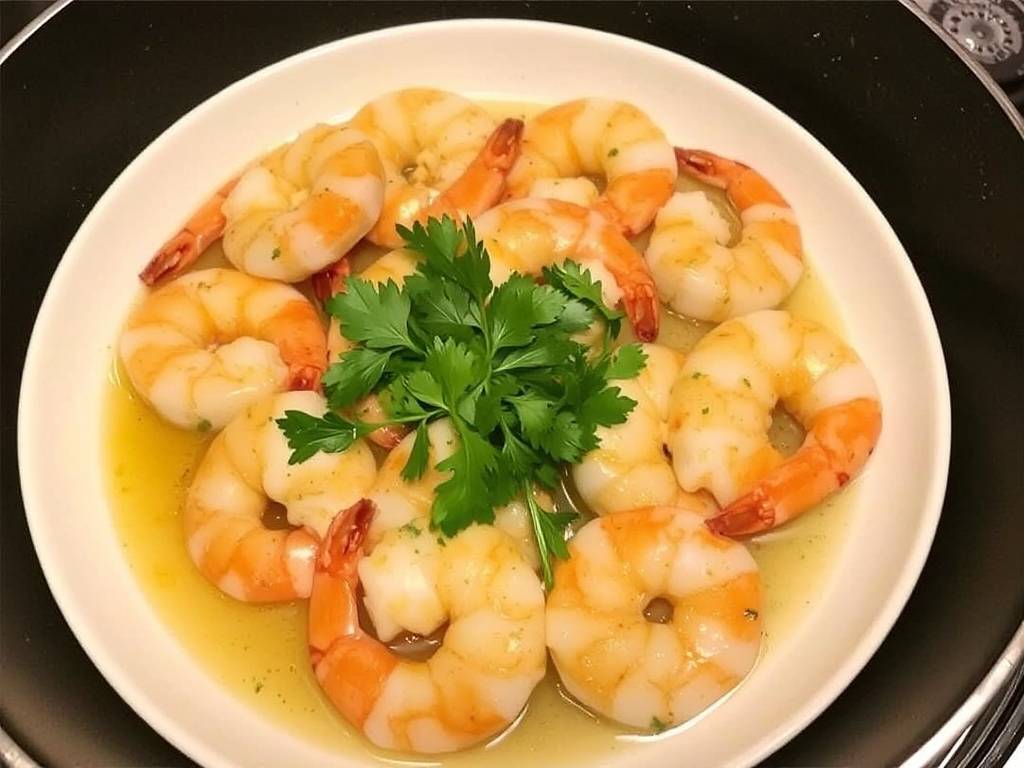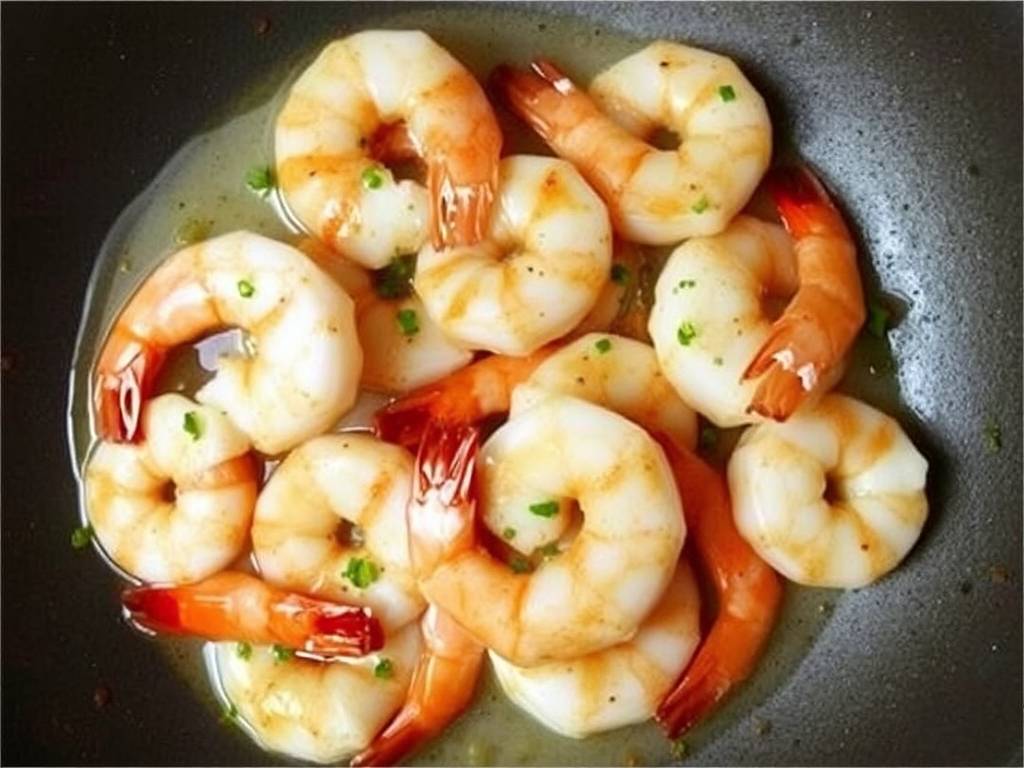A Culinary Journey: Mastering the Art of Garlic White Wine Shrimp
There's something truly magical about a dish that comes together in minutes yet tastes like it's been crafted by a seasoned chef in a fine-dining establishment. Enter Garlic White Wine Shrimp—a deceptively simple, elegantly flavorful, and incredibly versatile recipe that is about to become your new weeknight hero and your go-to for effortless entertaining. This isn't just about following steps; it's about understanding the symphony of flavors and mastering a technique that will serve you for a lifetime of cooking.
If you've ever been intimidated by seafood or skeptical about cooking with wine, fear not. This comprehensive guide will walk you through every nuance, from selecting the perfect shrimp to achieving that sublime, restaurant-quality sauce. We're not just making shrimp; we're creating an experience.

The Foundation: Selecting Your Ingredients
The beauty of this dish lies in the quality of its core components. Using premium ingredients is the first and most crucial step toward an unforgettable meal.
- The Star: The Shrimp. For the best garlic white wine shrimp recipe, you want large shrimp, often labeled as 16/20 or 21/25 count (meaning 16-20 or 21-25 shrimp per pound). I highly recommend using wild-caught shrimp for their superior flavor and firm texture. Whether you use fresh or frozen is less important; high-quality frozen shrimp are often flash-frozen at sea, locking in freshness. Just ensure they are properly thawed in the refrigerator overnight. For the ultimate gourmet touch, consider leaving the tails on—they add a tremendous amount of flavor to the sauce as they cook.
- The Aromatic Base: Garlic. Don't be shy! We're making garlic shrimp, after all. Use fresh garlic cloves and mince them yourself. The pre-minced jarred variety simply doesn't offer the same pungent, aromatic punch. For this recipe, aim for 4 to 6 large cloves, finely minced.
- The Soul of the Dish: White Wine. The choice of wine is a common point of confusion, but the rule is simple: use a wine you would enjoy drinking. A dry, crisp white wine is ideal. Sauvignon Blanc, Pinot Grigio, or an unoaked Chardonnay are perfect choices. They provide acidity and fruitiness without overwhelming sweetness or oakiness. Avoid "cooking wine" from the supermarket, as it contains added salt and preservatives that will throw off the balance of your delicate sauce.
- The Supporting Cast: You'll need good extra-virgin olive oil, fresh lemon juice, a generous handful of fresh parsley, and cold, unsalted butter. The butter, added at the end, is our secret weapon for creating a luxuriously silky and emulsified sauce. Red pepper flakes are optional but highly recommended for a subtle kick of heat.
The Technique: A Step-by-Step Guide to Perfect Shrimp
Now, let's dive into the actual process of how to cook shrimp with white wine and garlic. The entire process takes less than 15 minutes, so it's essential to have all your ingredients prepped and within arm's reach—a practice chefs call "mise en place."
-
Prep is Key. Pat your thawed shrimp completely dry with paper towels. This is non-negotiable! Moist shrimp will steam instead of sear, and we're aiming for a beautiful, light sear. Season them generously with salt and black pepper. Mince your garlic and chop your parsley.
-
The Sizzling Start. Heat a large skillet—stainless steel or cast iron works best—over medium-high heat. Add a couple of tablespoons of olive oil. Once the oil is shimmering hot, add the shrimp in a single layer. Do not crowd the pan; cook in batches if necessary. We are looking for a quick sear, about 1-2 minutes per side, until they are just pink and opaque. They should have a slight curl, forming a "C" shape. Do not overcook them! Shrimp cook in a flash and become rubbery if left too long. Remove them immediately from the pan and set them aside on a plate.
-
Building the Flavor Foundation. In the same skillet, you'll see those beautiful browned bits left by the shrimp. This is fond, and it's pure flavor gold. Reduce the heat to medium and add the minced garlic and a pinch of red pepper flakes. Sauté for just 30-60 seconds until fragrant. The goal is to toast the garlic, not burn it, as burnt garlic will turn the entire sauce bitter.
-
The Grand Deglaze. This is the most satisfying step. Pour in your dry white wine—about 3/4 of a cup. It will sizzle and steam dramatically. Use a wooden spoon or spatula to scrape all those browned bits from the bottom of the pan. This process, called deglazing, is how you infuse your sauce with an incredible depth of flavor. Let the wine simmer and reduce by about half, which will take 2-3 minutes. This cooks off the raw alcohol and concentrates the wine's flavor.
-
Finishing with Finesse. Turn the heat down to low. Now, for the chef's secret: swirl in 2-3 tablespoons of cold butter, one piece at a time, while gently shaking the pan. This technique, called "monter au beurre," creates a slightly thick, glossy, and emulsified sauce that clings beautifully to the shrimp. Add a generous squeeze of fresh lemon juice and half of your chopped parsley.
-
The Grand Finale. Return the seared shrimp to the pan, along with any accumulated juices. Toss them gently in the glorious sauce for just 30 seconds to warm them through. This final toss ensures every piece of shrimp is coated and perfectly heated without further cooking.
Serving, Pairing, and Customizing Your Masterpiece
Your easy shrimp scampi style dish is ready! But what to do with it? The possibilities are nearly endless.
- The Classic Bed: Serve it immediately over a pile of angel hair pasta, linguine, or spaghetti. The pasta acts as the perfect vehicle for that incredible garlic white wine sauce.
- A Lighter Option: For a low-carb meal, spoon the shrimp and sauce over a bed of zucchini noodles ("zoodles"), cauliflower rice, or creamy polenta.
- The Ultimate Dipper: Present it in a bowl with crusty, warm bread on the side. There's no greater joy than sopping up every last drop of that sauce.
- Wine Pairing: Since you used a dry white wine to cook, it's the natural choice to drink alongside it. A glass of that same Sauvignon Blanc will complement the dish perfectly.
This recipe is also a fantastic canvas for your own creativity. Want to make a creamy garlic white wine shrimp? Add a splash of heavy cream after the wine has reduced. Craving more vegetables? Sauté some sliced mushrooms or cherry tomatoes with the garlic, or stir in a handful of fresh spinach at the very end until it wilts.
You have now mastered not just a recipe, but a fundamental cooking technique. You've learned how to sear protein, build a pan sauce through deglazing, and finish it with butter for a professional touch. This method can be applied to scallops, chicken, and even firm fish. So, the next time you're wondering what to make for a quick, impressive, and delicious meal, remember this guide. Your journey to creating the perfect, succulent, and flavor-packed Garlic White Wine Shrimp starts now. Happy cooking







发表评论